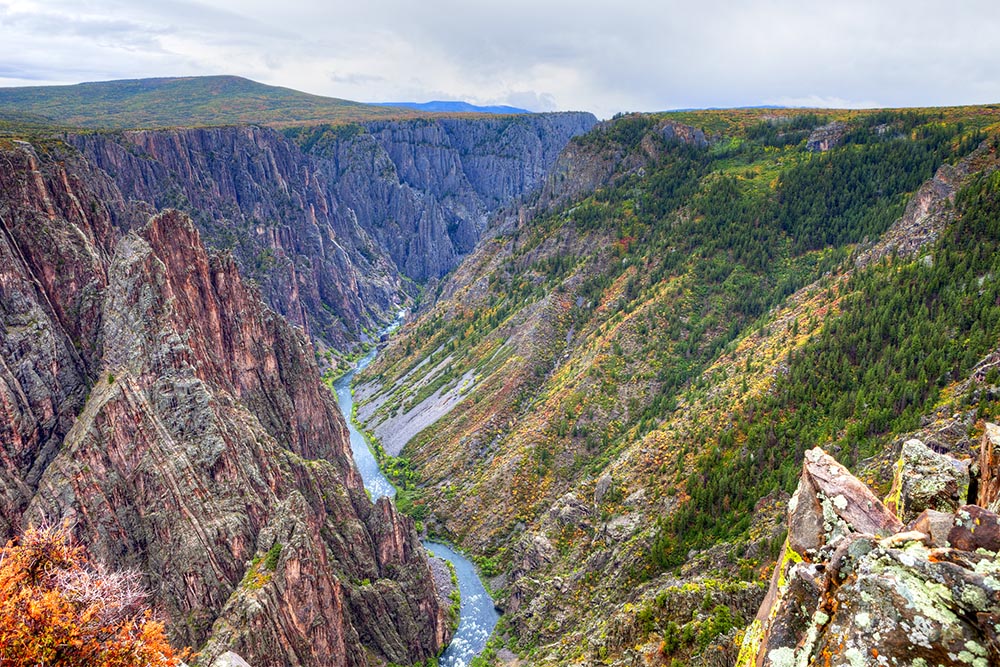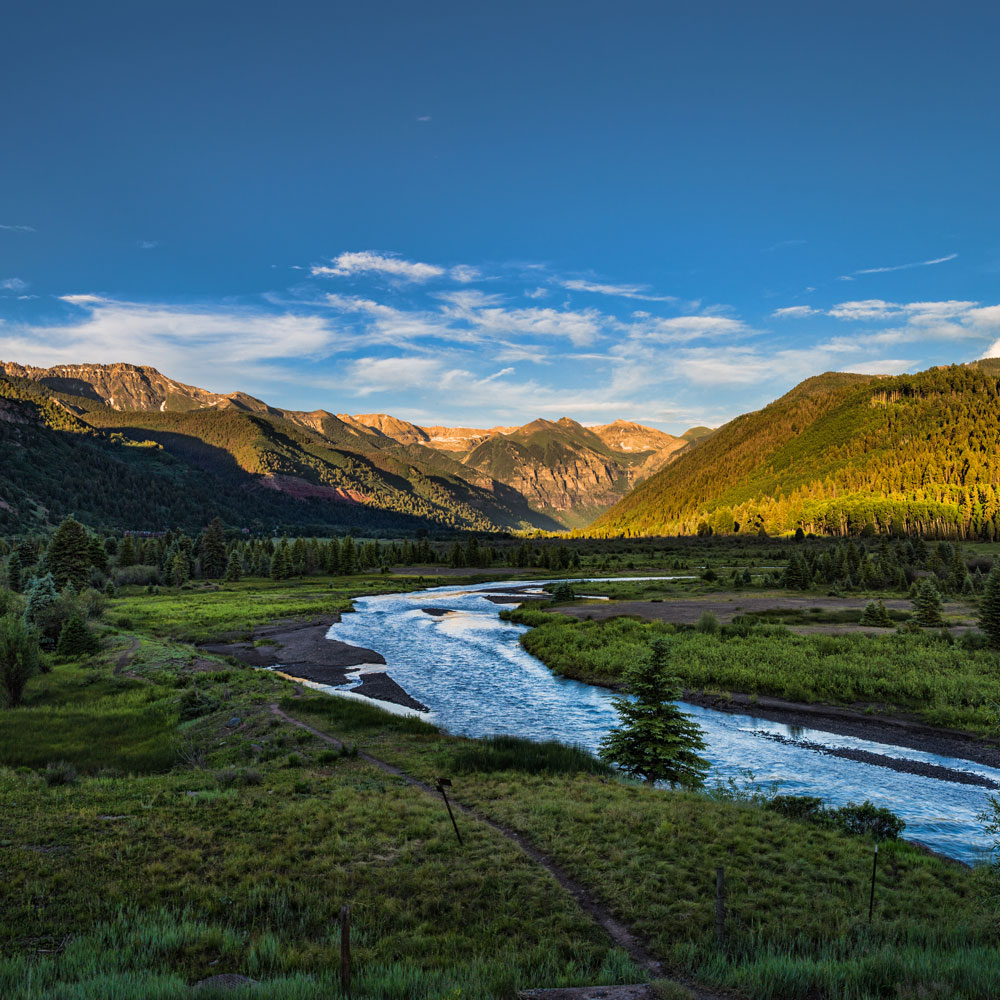As Colorado’s Water Plan was being drafted, we worked with our partners to ensure Coloradans had a say in shaping their own water future, helping drive more than 30,000 comments – the most public participation of any state public process like it. More than 7 years after helping shape the 2015 Colorado Water Plan, WRA continues to support its active implementation, from finding sources of funding to identifying priority projects to supporting efforts to update the plan to ensure it meets Colorado’s needs.
Colorado Water Plan Overview
Colorado’s Water Plan recognizes the intersection of Colorado’s waterways, economy, and water use. It’s critical that plan implementation addresses impacts to local economies, community resiliency, and ecosystem health. Collaboration and innovation will be key as we address water scarcity in Colorado and across the West.
Colorado’s communities and economy cannot survive without water, but the rivers and streams that support people, agriculture, recreation, commerce, and the environment are under pressure like never before. Conflicts among competing water uses are rising, and the health of our rivers is at risk.Colorado’s Water Plan aims to guide the state to a future where water demand comes into balance with water supply. Without restoring this balance, our communities and rivers face a perilous future.
Colorado’s first Water Plan was published in November 2015 and reflects Coloradans’ values and water priorities, including several focused on river health, including:
- Setting the first-ever statewide urban water conservation target to be achieved by cities and towns, prioritizing water conservation as never before;
- Proposing annual funding for healthy rivers, including river assessments and restoration; and
- Making it less likely for new, costly and controversial large trans-mountain diversions that harm rivers and local communities.
Colorado’s Water Plan includes information and goals for the state and borrows significant information from the Basin Implementation Plans. Colorado’s Water Plan allows planners to understand what types of projects will work best in different areas, and that these basins are inter-connected when it comes to finding statewide solutions to water scarcity.
The majority of Colorado’s Water Plan was built on the three primary values outlined by Governor Hickenlooper in his executive order (a productive economy, efficient and effective water infrastructure, and a strong environment) to create “Measurable Objectives” for embracing these values in the future.

How Coloardo’s Water Plan Came to Be
Between 1930 and 2015, Colorado’s population increased from 1 million to 5 million; and the current population is projected to double by 2060. This unprecedented growth, in combination with other statewide challenges — such as decades-long drought, wildfires, flooding, and climate change — require statewide, collaborative, and innovative solutions that consider both Colorado’s environment and all of the individuals residing within it. Colorado’s Water Plan specifically recognizes that water is fundamental to meeting growing demands and to protecting our natural environment into the future.
In 2013, Colorado officially addressed the dire need for a comprehensive plan to sustainably manage the state’s limited water resources while still providing for its residents and growing economy. In May of that year, Governor John Hickenlooper signed an executive order assigning the Colorado Water Conservation Board (CWCB) – the state’s governing body responsible for protecting and developing Colorado’s water resources – to produce Colorado’s Water Plan. The three core values of the executive order still stand today, and are used to inform the implementation of the plan:
- A productive economy that supports vibrant and sustainable cities, viable and productive agriculture, a robust skiing, recreation and tourism industry;
- Efficient and effective water infrastructure promoting smart land use; and
- A strong environment that includes healthy watersheds, rivers and streams, and wildlife.
Over the next two years, the CWCB and the nine Basin Roundtables – stakeholder groups organized in 2005 in response to the Colorado Water for the 21st Century Act to include regional perspectives on water development – gathered input from across the state, including farmers, residents of rural and urban areas, conservation groups, and businesses. The meetings helped articulate the unique needs of each of Colorado’s river basins identified in Basin Implementation Plans (BIP).
In November 2015, Governor Hickenlooper signed Colorado’s Water Plan as presented by the CWCB. As it was being drafted and discussed, WRA and partners brought the plan to the attention of thousands of community members. More than 30,000 Coloradans commented on the plan, the largest civic engagement in a water issue in state history.

Measurable Objectives in Colorado’s Water Plan
The majority of Colorado’s Water Plan was built on the three primary values outlined by Governor Hickenlooper in his executive order (a productive economy, efficient and effective water infrastructure, and a strong environment) to create “Measurable Objectives” for embracing these values in the future.
Measurable objectives are defined as “a result or benchmark expected to be achieved from the implementation of Colorado’s Water Plan.” They are the ways in which the three primary values in the 2013 Executive Order will be achieved now and in the future. Measurable objectives are the easiest and most tangible way to track the success of the plan.
There are eight measurable objectives in Colorado’s Water Plan: [Design: any way to condense these via design is much appreciated]
1. Supply-Demand Gap
The supply-demand gap has to do with the fundamental fact that Colorado uses more water than the environment naturally provides. The supply-demand gap is lessened when Colorado decreases its water use through conservation and/or increases its supply through water storage, recycling, and creating more ways to share water. Without immediate action and innovative solutions, the plan projected that the municipal and industrial gap will reach 560,000 acre-feet of water by 2050. Colorado’s Water Plan sets a measurable objective of reducing the supply-demand to zero acre-feet by 2030.
2. Conservation
Colorado needs to reduce its demand through conservation and efficiency in cities, towns, farms, and ranches. Smart water solutions, such as reducing the extent of residential turf, can go a long way. Colorado’s Water Plan sets a measurable objective of 400,000 acre-feet of municipal and industrial water conservation by 2050.
3. Land Use
With the state’s population expected to keep growing, Colorado must find more water-thrifty measures to support the next 5 million residents than it did the last 5 million. Colorado’s Water Plan sets a measurable objective that by 2025, 75% of Coloradans will live in communities that have incorporated water-saving actions into their land-use planning.
4. Agriculture
Agriculture is both the largest consumer of water in Colorado and vital to our state’s economy and local communities. Due to the large volume of water used by this sector, large scale water conservation and efficiency efforts, and innovative water sharing approaches must be implemented. Colorado’s Water Plan sets a measurable objective that agricultural economic productivity will keep pace with growing state, national, and global needs, even if some areas go out of production. The plan sets a goal to share at least 50,000 acre-feet of agricultural water for other uses, through voluntary agreements, known as alternative transfer methods, by 2030. It is projected that without these coordinated efforts, Colorado could lose up to 20% of its irrigated agricultural land by 2050.
5. Storage
Some new water storage is seen by many as a way to supply growing populations in a changing hydrological landscape. New projects will be increasing innovative, relying on technology like aquifer storage and recharge, and maintaining strong environmental health. Colorado’s Water Plan sets a measurable objective of attaining 400,000 acre-feet of water storage in order to manage and share conserved water and the yield of many of the Identified Project and Processes (IPP) by 2050.
6. Watershed Health, Environment, and Recreation
To enable a strong environment, the plan presents the importance of establishing strategies to maintain the health of Colorado’s waterways. Stream and watershed management plans provide a framework for keeping healthy stream and watershed systems, while also protecting local water uses and planning for future consumptive and non-consumptive water needs. Colorado’s Water Plan sets a measurable objective to cover 80% of locally prioritized lists of rivers with stream management plans, and 80% of critical watersheds with watershed protection plans, by 2030.
7. Funding
To meet these objectives requires new sources of funding, especially for traditionally under-funded projects like conservation, environment and recreation, and water sharing. In 2015, only 1% of Colorado’s state budget went to natural resources, of which water and related projects received only a portion. Colorado’s Water Plan sets a measurable objective to sustainably fund its implementation by raising $100 million annually starting in 2020, which totals $3 billion by 2050.
8. Education, Outreach, and Innovation
All of these objectives will be easier to meet if the general public has a better understanding of the state’s water issues. Colorado’s Water Plan sets a measurable objective of significantly improving the level of public awareness and engagement regarding water issues statewide by 2020, as well as engaging Coloradans statewide on at least five key water challenges (identified by CWCB) that should be addressed by 2030.

What’s Next?
Colorado’s Water Plan is in the process of a scheduled update in 2023.
Colorado is crafting a new plan around four action areas:
- vibrant communities,
- robust agriculture,
- resilient planning, and
- thriving watersheds.
We are working hard to shape this new plan, in order to keep many of the good objectives from the original but also adapt to a changing world. The current and future plan will face nearly a $3 billion gap in funding that is critical to its success. Proposition DD, a measure WRA supported in 2019 to legalize sports betting, provides most of its tax revenue (a total of $12 million in 2021) to plan implementation. And the River District’s 2020 ballot measure 7A adds another $5 million per year. However, these are just a down payment on the $100 million needed annually, and WRA is calling on the legislature and state to do more to prioritize funding.
In addition to this, we are living the climate crisis and feeling its effects more and more every day. Relying on an already stressed Colorado River Basin to meet human demands at a rate greater than the river system can naturally provide has lasting negative effects on our rivers and reservoirs. These bodies of water are deteriorating due to more dams and diversions for use by cities and agricultural irrigation, and increased pollution from oil and gas extraction, as well as mining. Climate change also poses massive threats to our rivers and lakes because of drought, severe flash flooding, and extreme wildfires. Colorado’s Water Plan will play a crucial role in securing healthy rivers now and for generations to come.

